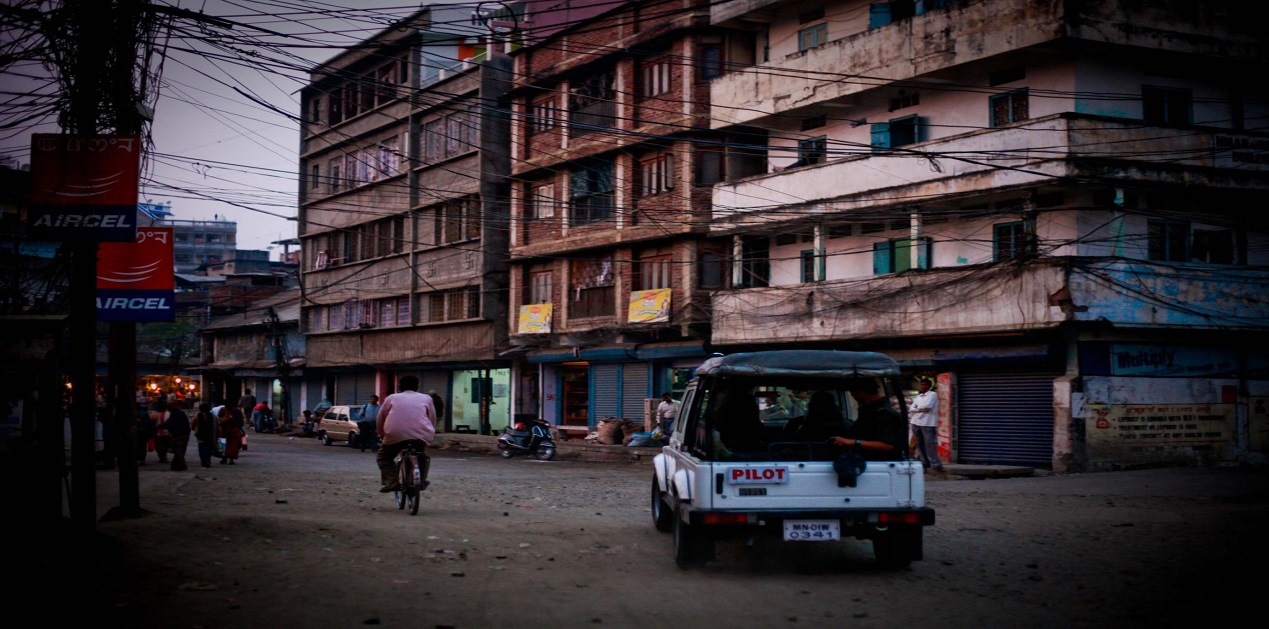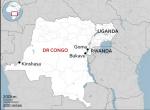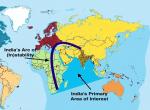The violence and instability in Manipur started on 03 May, though the seeds of the same have been there for years. The figures may vary, but the latest reports by IGP Muivah states that around 175 people have died and 1100 injured in the past four months of violence in the state.[1] There are multiple reasons for the rise of violence and instability in the State. Not just the internal politics and economic situation, but also the external factors have played their role in the present crisis. The violence started with the clashes largely between two ethnicities but soon shaped itself into problems of counter-insurgency and cross-border crime. The visit by the Indian Defence Secretary to Myanmar suggests that the crisis in Myanmar affects the stability of India’s northeast region.
Manipur is an abode of diverse communities across ethnic and religious lines. There are three major ethnic groups in the state, i.e. Naga, Hill tribes (Kukis, Zo and others) and the Meitei. From the time of India’s independence to 1972, when it got complete statehood and to the present, the internal politics of the state revolved around the issues related to ethnic identities. However, the prevailing violence is a result of the rights and claims of these ethnic identities as well as the presence of external factors, which will be discussed later in the article.
The roots of the present-day violence lie in the conflicting demands of ethnic communities and the dominant identity politics of the state.[2] The Meiteis, who reside in the valleys, demanded inclusion of their community in the Scheduled Tribe (ST) category on the basis of being an indigenous community. The Constitution of India provides for the protection and preservation of the rights of Scheduled Tribes under various articles, such as Article 19 or Article 371. Manipur state is also granted this special status under Article 371 C to protect the rights and land of Scheduled Tribes. Since the definition of ST status is itself under debate, as the Government has decided to redefine the procedure and criteria of defining an ST community, one can argue that the protection under this category preserves the rights and interests of the aforementioned communities.
Recently, in response to Meitei's demand for ST status, Manipur High Court asked the State Government to consider ST status for the Meitei community. In protest, the All-Tribal Students Union of Manipur led a rally on 03 May. On the same day, there were reports that the Anglo-Kuki War Memorial Gate had been burnt down. As a result, the two sides, Kukis and Meiteis burnt several villages (largely Nagas remained outside this conflict). As a result, few MLAs have demanded separate administration for these hill areas.[3]
However, the demand raised by Meiteis for ST status has been there for years. Their claim to be an indigenous community goes back years. In 2015, the Manipur government introduced three bills in the state legislature - the Manipur Land Revenue and Land Reforms (Seventh) Amendment Bill 2015 (MLRLR Bill 2015), the Protection of Manipur People’s Bill, 2015 and the Manipur Shops and Establishments Act (Second) Amendment Bill 2015. As the bills were introduced, the tribal people of Manipur jointly opposed the Bills, stating that if Meiteis were recognised as indigenous people, it would give them ST status, which would ultimately strengthen their existing economic and political control in Manipur. The opposition by the tribal people resulted in strong agitation against the bills, which also led to a few incidents of violence.[4]
Additionally, the claim over land is another point of contention. Meiteis cannot buy lands in the hill regions, but Kukis and other tribal communities can do so in the valley. Furthermore, the Meiteis, along with the Nagas, expressed fears that the Chins coming from Myanmar would eventually settle on their lands. The Meiteis, therefore, demanded a National Register for Citizens. While the current ethnic nationalism is also linked to religious ideologies, an attempt has been made to keep it out of the purview of research for the given article.
Though the genesis of the crisis lies in the internal factors, the external factors emanating from Myanmar and China can't be ignored. The northeast region of the country is mired with challenges flowing in China’s incidental support to insurgent activities via training, arms and ammunition since the early 1960s. In this article, the focus will be on evaluating the factors fuelled by the neighbouring country i.e. Myanmar. Manipur shares around 380 km unfenced border with Myanmar and the people on the two sides of the border share close ethnic and cultural ties dating back to centuries. Similarly, the two sides have also faced the problem of insurgencies which have been a cause of concern for armies on both sides of the border. The present movement of people from Myanmar to India has raised concerns about three major issues, refugee settlement and land encroachment, insurgency, looting and arms smuggling and opium production.
The movement of people across the border, though not a new phenomenon, has increased since the military takeover and instability in the bordering areas of Myanmar, especially Sagaing and Chin regions. States like Mizoram and Manipur have seen a huge influx of refugees. A report by a sub-committee of the Manipur Cabinet, headed by Tribal Affairs and Hill Development Minister Letpao Haokip, reported that 2,187 illegal immigrants from Myanmar have settled in four districts, namely Tengnoupal, Chandel, Churachandpur and Kamjong. Here, it is interesting to note that the people migrating from Myanmar, especially the Chin people have close ethnic ties with the Kukis of the Manipur state. Even in Mizoram, Myanmar citizens were welcomed with open arms, despite reservations raised by the Central Government.
However, the ruling government of Manipur has started taking multiple steps to identify these individuals who have crossed the border illegally. In August 2022, the state assembly passed a resolution to set up a population commission. The State Government constituted the Cabinet Sub-Committee on Identification of Illegal Immigrants to check undocumented Myanmar refugees and report on their status.[5] In April 2023, a random identification drive as part of the population commission’s work identified 1,147 undocumented Myanmar nationals in Chandel, Tengnoupal, and Churachandpur. In May, Facial Recognition System was used to detect undocumented migrants in the state.[6] But various Kuki Civil Society Organisations (CSOs) have perceived these identification measures as harassment of Kuki tribes as illegal immigrants. And therefore, ethnic violence followed these measures.
While many people fled the current crisis-hit situation in Myanmar to seek refugee and humanitarian aid across the border, it also laid the ground for insurgent groups to resurface again and use the prevailing instabilities on both sides for their benefit. Chief Minister Biren Singh said that infiltrators from across the border and militants have caused the ongoing unrest in the state and are not a result of just indifferences between two communities. There have been reports about the presence of insurgents hiding in the hilly and forested areas of Manipur. Manipur government officials have reported that the insurgent groups on both sides are involved in flaring up the current situation.[7]
Furthermore, the Meiteis and Kukis accuse each other of using insurgents to attack villages. While the Kuki groups allege Meiteis of supporting policemen and attacking their villages, Meitei groups have accused the Kuki insurgents of launching attacks on Meitei villages and taking advantage of the Suspension of Operations (SoO).[8] On the other hand, the State Government has launched numerous steps to curb the movement of insurgent groups. They have also attacked these groups and according to the Chief Minister, 40 terrorists were killed.[9]
Additionally, the current instability and violence are leading to looting and smuggling of arms and ammunition. India’s Central intelligence agencies reported that around 4000 arms and various types of ammunition were looted and supplied to militant groups operating in Myanmar. According to sources, the stolen weapons include sophisticated AK series rifles, M16 rifles, submachine guns, carbines, and most recent models of handguns.[10] Arms and ammunition were also illegally brought inside Manipur via Myanmar as reported by the Chief Minister's Secretariat in Manipur.
Finally, with the presence of these insurgent groups, the cultivation of poppy has increased in the state and there are fears of land encroachment. Even the report released by the United Nations Office on Drugs and Crime in January 2023, argued that the crisis in Myanmar has fuelled cross-border drug smuggling. Even during the ongoing violence, the Narcotics and Affairs of Border (NAB) seized 77 gunny bags suspected to contain poppy seeds and Myanmar’s currency notes in Imphal.
As the State Government launched its war against drugs, the influential illegal poppy cultivators and drug lords from Myanmar, who are presently settled in Manipur fuelled the current violence. Additionally, the State Government has alleged that the Kuki-Chin tribes have links to the Myanmar drug cartels. Manipur Chief Minister Nongthombam Biren Singh accused the Chin-Kuki communities of cultivating poppy and doing drugs business. Previously, in July 2022, Congress MLA Kangujam Ranjit Singh raised the poppy cultivation issue in the Manipur legislative assembly and pointed out how the hill areas of the state have been used for poppy plantations. But observers state that the government is wrongly accusing the tribal peoples.[11]
It is also important to reflect on the data provided by the state’s Narcotics and Affairs of Border (NAB) unit. In the past five years, 2518 people were arrested; out of these, 1,083 Muslims, 873 Kuki-Chin, 381 were Meiteis and 181 others. Additionally, NAB reported that out of the 15497 acres of land where poppy cultivation was found, 13,122 acres were in Kuki-Chin-dominated areas, 2,340 acres in Naga-dominated areas, and 35 acres under others.[12] Clearly, data shows that multiple actors are involved in poppy cultivation and it is premature to accuse any particular community. Simultaneously the areas which have a predominant presence of its cultivation must act in the interest of the state and ensure that the area and trade of poppy cultivation cease. The roots of this problem lie in proximity to the golden triangle and the current instability in Myanmar, which has led to increased production across the region.[13]
Recent State and Centre Efforts to Resolve the Crisis
The Manipur Chief Minister, along with his cabinet ministers and Rajya Sabha Member of Parliament Maharaja Leishemba Sanajaoba, met Union Home Minister Amit Shah in Delhi to discuss the current situation in the state.[14] As a follow-up, Home Minister Amit Shah made a four-day visit to Manipur aimed at brokering peace between the Meitei Hindus, and the tribal people of the Kuki-Chin ethnic group. Shah held meetings with 25 Kuki civil society organisations and 22 Meitei civil society organisations during these four days.
The visit emphasised the need to effectively seal the international borders with Myanmar as a solution to the problems in Manipur. The work on setting up wired fencing across 10 kilometres of the Manipur-Myanmar border on a trial basis has been started and the tender for fencing on another 80 kilometres was released. Additionally, biometric data and retinal scans of people coming from neighbouring countries are also being recorded. He also stated that a judicial probe headed by a retired High Court judge, would be set up to investigate the violence on behalf of the central government. He further announced the creation of a peace committee between members of different communities and called for the return of an estimated 1,420 weapons looted from local police since the start of the clashes. Ahead of Shah’s visit, India’s Chief of Army Staff, General Manoj Pande, also made a two-day visit to Manipur to assess the situation.
Amid the ongoing violence, Indian Defence Secretary Shri Giridhar Aramane made an official visit to Myanmar from 30 June-01 July 2023. He met Chairman, State Administrative Council Senior General Min Aung Hlaing, Defence Minister of Myanmar Gen (Retd.) Mya Tun Oo, Commander-in-Chief, Myanmar Navy, Admiral Moe Aung and Chief of Defence Industries Lt Gen Khan Myint Than. The visit reiterates the fact that instability in Myanmar has implications for the current crisis in Manipur, with increased movement of people illegally, and drug and arms trafficking. The two sides discussed matters relating to maintaining security at borders by curbing illegal trans-border movements and transnational crimes such as drug trafficking and smuggling.[15] As argued before, instability in Myanmar has a direct bearing on India’s northeast, which shares 1643 km of border with Myanmar. It is of utmost importance to ensure peace and security at the borders for the stability of the two sides.
Way Forward
To conclude, the crisis in Manipur presents a number of challenges such as the intensification of ethnic identity politics and violence, poppy cultivation and trade, national security and security of borders. Manipur violence is rooted in each community’s narrative and perception of their past and must not get engulfed in branding the other community as infiltrators or not worthy of being given the status of indigenous people. The root cause of the conflict is the claims over land, which must be resolved with due care to the needs of tribal communities and the concerns of the Meiteis. In addition, the number of insurgent groups has grown and this proliferation of armed groups has added to the complexity of the political problem. However, no one group can be blamed for the same.
The external factors, i.e. the borders with Myanmar must be appropriately managed to ensure national security and peace and stability for the people of the state. The movement of refugees or migrants from Myanmar is not a new phenomenon. Myanmar has faced unrest in earlier periods as well, and refugees crossed borders whether it was in 1962, 1988 or 2021. The ethnic similarity that unites the Kukis and Chins from Myanmar needs to be considered in the State’s responses.
Also, in the present drive to identify the illegal migrants, the State Government must exercise caution not to deprive the hill sections of their rights to land. The conflict-displaced people from Myanmar must be provided with humanitarian assistance. The cry against ‘outsiders’ will only build up prejudices and dislike for the Myanmar people who are already suffering from the crisis in their country and lead to more violence. The outsiders must not be made scapegoats for all the problems.
Additionally, one must closely look at the link between the decline in poppy cultivation in the Golden Triangle of the Myanmar-Thailand-Laos trijunction, which has resulted in a shift of the drug corridor to the Myanmar-Manipur border areas. Transnational Institute reported in December 2021 that over the past 15 years, Manipur seems to be more integrated with the regional drug economy, notably from Myanmar. [16]
The violence and instability in Manipur have pushed the state into a social and economic crisis. A recent report submitted by the State Government to the Supreme Court stated that the violence has resulted in 142 deaths, with Imphal West, Imphal East and Churachandpur districts most affected. As a consequence, more than 54,000 people are displaced with many living in relief camps in the state.[17] The sooner the state gets back to its normal state of affairs and ends this identity politics, the better it will be able to address the problem of illegal migrants, insurgent groups, poppy cultivation and drugs and arms trafficking.
Refrences
[1] https://www.thehindu.com/news/national/175-killed-over-1100-injured-in-four-months-of-manipur-violence-police/article67310428.ece
[2] https://mizzima.com/article/manipur-violence-rooted-each-communitys-narrative-and-perception-their-past
[3] Within these eight MLAs are from the BJP and two from the Kuki People’s Alliance, an ally of the ruling party, who alleged that the violence was “perpetrated by the majority Meitei community and was tacitly supported by the BJP-run state government”.
[4] In 2018, the Protection of Manipur People’s Bill was passed. Again, the tribals opposed the Bills but the Meitei people with 40 seats in the 60-seat legislative assembly were successful in passing it. The controversy over the Manipur People’s Bill was over two provisions: the recognition of ‘indigenous ’people and the cut-off date for recognition was pushed back from 1971 to 1951. On the basis of the indigenous people accorded by this legislation, Meities are demanding ST status.
[5] Cabinet subcommittee consisted of three ministers: Letpao Haokip, who is a Kuki; Awangbou Newmai, who is a Naga; and Thounaojam Basanta Singh, who is a Meitei.
[6] The sub-committee, whose members also include state Ministers Awangbow Newmai and Thounaojam Basanta, visited the tribal-dominated districts in March and April, during which they met the illegal immigrants, and spoke to them about providing humanitarian relief and shelters. https://organiser.org/2023/06/19/179603/bharat/manipur-violence-myanmar-issues-notice-for-refugees-in-india/
[7] https://economictimes.indiatimes.com/news/politics-and-nation/state-govt-sees-role-of-myanmar-based-militants-in-violence/articleshow/100057812.cms
[8]Over 25 Kuki insurgent groups have signed the tripartite "suspension of operations" (SoO) agreement with the centre and the state government. Under the SoO rules, the insurgents are to be confined in designated camps identified by the government and the weapons kept under locks, regularly monitored.
[9] https://www.ndtv.com/india-news/suspected-insurgents-on-india-myanmar-border-entered-manipur-sources-4080271
[10] https://theshillongtimes.com/2023/05/31/manipur-violence-over-4000-looted-weapons-might-have-reached-militants-in-myanmar/
[11] https://www.washingtonpost.com/world/2023/05/26/india-violence-manipur-myanmar/
[12] https://www.ndtv.com/india-news/15-400-acres-under-poppy-cultivation-in-manipur-2-500-arrested-in-5-years-sources-4040264
[13] https://thewire.in/security/manipur-violence-poppy-national-security-golden-triangle
[14] https://www.indiatodayne.in/manipur/story/manipur-soo-militants-found-using-illegally-imported-sophisticated-weapons-from-myanmar-confirms-joint-monitoring-committee-558465-2023-05-15
[15] https://pib.gov.in/PressReleaseIframePage.aspx?PRID=1936668#
[16] https://www.tni.org/files/publication-downloads/tni_poppyfarmers_web.pdf
[17] https://indianexpress.com/article/india/manipur-govt-most-deaths-in-imphal-west-east-churachandpur-8825006/
(The paper is the author’s individual scholastic articulation. The author certifies that the article/paper is original in content, unpublished and it has not been submitted for publication/web upload elsewhere, and that the facts and figures quoted are duly referenced, as needed, and are believed to be correct). (The paper does not necessarily represent the organisational stance... More >>
Image Source: https://www.flickr.com/photos/lecercle/3465545565/in/photostream/











Post new comment